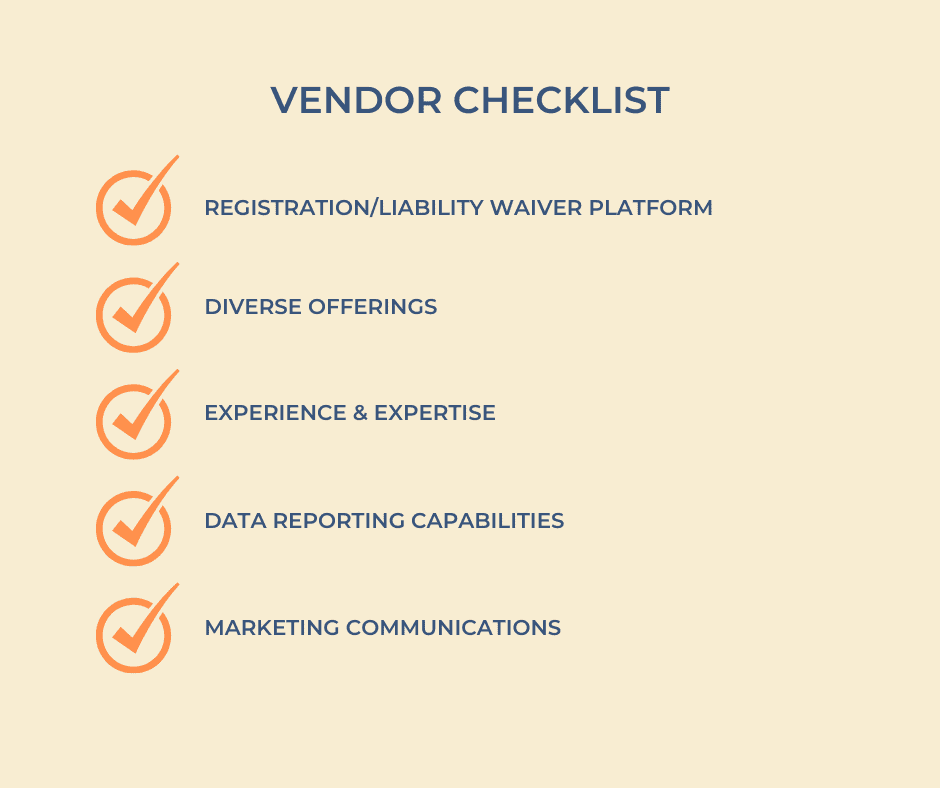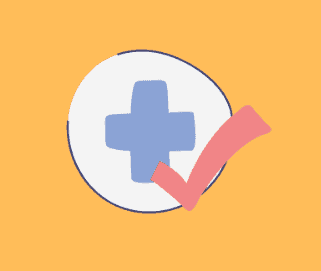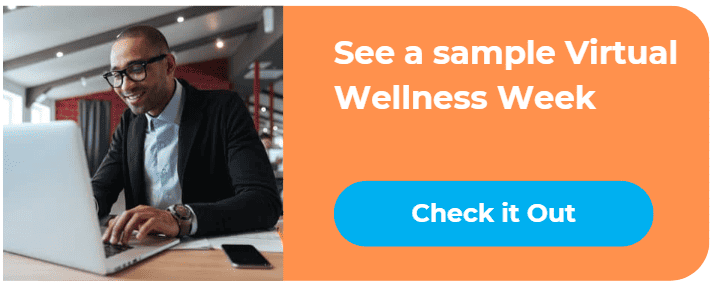How to Plan a Health Fair
Corporate health fairs can be more than just another event on your plate to organize. With mindful planning and consideration, a health fair can kickstart the organization’s journey to a healthier and happier workplace. Traditionally, health fairs were strictly onsite and aimed to ensure employees knew how to access healthcare resources, information, and services available to them.
Today, there are various models for employee health fairs and they incorporate health education, preventative care, and activities that make the event fun and easy for employees to attend. Join us as we cover how to plan a health fair that does more than check the boxes — it has a lasting impact on the investment that is workplace wellness.
Planning a Health and Wellness Fair at Work
In this post:
a. Identify Goals and Objectives
2. Workplace Health Fair Ideas
Getting Started
Organizing a corporate health fair is a strategic opportunity to promote a culture of well-being. Thoughtful planning not only boosts event participation but also lays the groundwork for sustained employee engagement in wellness initiatives.
Identify Goals and Objectives
Whether the event is of your own initiative or a directive from the C-suite, it’s vital to identify the goals and objectives of the health fair. Why are we doing this? Every company is unique and has different goals at different times, i.e. employee engagement, reducing healthcare costs, improving employee experience, culture building, etc. This objective should align with and progress overall business objectives.
Next, define success. What do we hope to achieve with the health fair? Perhaps it is a certain level of engagement, positive feedback, or employees showing interest in advancing their well-being. Identify measurable outcomes that can assess how successful the initiative was in achieving the outlined goals and objectives.
Tip: It’s helpful to find a vendor that includes engagement data reporting in their services.
Budgeting and Resources
Regarding budgeting for your health fair, the sooner you secure the funds from your stakeholders, the better. Your budget will drive the offerings available to you and provide a framework for the event. It’s also important to take stock of your internal resources and explore sponsorship opportunities, often available through your health plan.
Pre-Event Planning
The preliminary stages of planning a health fair build the foundation for a successful and impactful wellness event. Most vendors need around six weeks to comfortably accommodate your requests, so when solidifying the dates for the event, factor in time for pre-planning, selecting a vendor, and still having six weeks remaining for the vendor to execute and market the health fair. Some organizations choose to host a single-day health fair, while others plan a wellness week, or even two weeks of health fair speakers and activities.
Is your workforce onsite, remote, or hybrid? Post-pandemic, you have the option to host your health fair onsite or virtually. If your workforce is hybrid, it’s more feasible to host your event virtually, but a vendor like Strive has the flexibility to tailor their approach based on your needs.
Once the date(s) and location for the health and wellness fair are set, it’s time to begin mapping out the presentations and activities for your employees. For maximum participation, it’s important to understand the demographics and preferences of your workforce to select offerings that align with their interests and time slots relative to their schedules.
Tip: Survey your population in the pre-event planning stage to find out what they’re interested in, and when they’re most likely to participate.
Workplace Health Fair Ideas
The following workplace health fair ideas cater to diverse health needs, are fun and engaging, and are a great way to introduce a culture of health to your population.
Health Talks
Often referred to as “Lunch and Learns,” webinar-style educational sessions on topics such as:
Burnout Prevention
Same Dishes, Healthier Swaps
Tips & Insights for the Perfect Night’s Sleep
Biohacking for Immunity: Strengthening Your Body’s Defenses
How to Effectively Manage Diabetes and Pre-Diabetes
Onsite Chair Massage
A crowd-pleaser that relieves stress, energize the culture, and improve satisfaction and engagement levels.
Healthy Cooking Demos
Live and interactive sessions with a healthy chef that prepares a recipe based on a chosen theme, season, or holiday. Most organizations do this offering virtually, but a more feasible onsite option could be a Healthy Smoothie health talk with pre-made smoothie samples.
Stress Management Classes
Stress management classes cater to the widest variety of people and don’t require getting sweaty or fatigued. They are great for morning and afternoon sessions.
Mindfulness Meditation
Yoga
Breathwork
Stretch ‘n De-stress
Fitness Classes
Here are some examples of fitness classes. Pro tip: schedule fitness classes towards the end of the day as a closer for maximum participation.
Fun Bootcamp
Pilates
Body Sculpt
Dance Fitness
Challenges
Fitness and wellness challenges are most effective when conducted over a matter of weeks or months. If you’re interested in a fitness challenge, consider beginning it in the weeks prior to the health fair, and announcing winners at the event. Otherwise, challenges can target attendance and participation in the health fair’s sessions and offerings.
Raffles
Many organizations choose to reserve some of their budget for enticing raffle prizes. For example, if you attend three wellness events in one day, you are entered into a raffle to win a pair of running shoes/wearable fitness device/gift card.
Tip: Strive includes engagement data collection and reporting in our services, as well as a tool to select a raffle winner. This relieves the administrative burden of manually tracking attendance/winners for health fair organizers.
Non-Intrusive Health Screenings
A feasible alternative or supplement to biometric screenings, non-intrusive health screenings leverage measurements like weight, BMI, and body fat percentage to motivate employees to engage in the wellness offerings.
Finding and Securing Vendors
Collaborating with a wellness vendor in addition to core vendors such as healthcare and insurance providers, dentists, chiropractors, etc. is the secret sauce to hosting a health fair that promotes employee well-being and begins fostering a culture of health.
Here are some features to look out for when researching wellness vendors that can minimize work for your internal team, elevate the employee experience, and pave the way for an ongoing, sustainable wellness program.
Registration/Liability Waiver Platform
Utilizes technology systems to streamline the registration and liability waiver management process.
Diverse Offerings
Hosts a wide variety of wellness offerings, adaptable accommodations, and network of instructors/specialists.
Experience & Expertise
Holds years of industry experience and expertise (Strive has 15+!) that can inform your strategy, planning, and approach to risk indemnification.
Reporting Capabilities
Utilizes technology to collect, analyze, and report registration and participation data to measure success and shape future health fairs and wellness offerings.
Marketing Communications
Prepares professional marketing materials and communication packages to promote the event.
Learn more about How-To Choose the Right Corporate Wellness Partners.

Post-Event Evaluation
After the health fair, organizers and stakeholders can reflect on the event’s objectives and gauge its effectiveness through data analysis, direct employee feedback, and/or surveys. This evaluation process celebrates achievements, identifies areas of improvement, and refines processes for future health and wellness events. A post-event evaluation also gleans valuable insights about what your workforce is likely to engage in long-term.Benefits of Hosting a Corporate Health Fair
While health fairs are often viewed as a single-day event, their impact can extend well beyond the day itself. A thoughtfully planned health fair can act as a catalyst for long-term wellness engagement and organizational improvement. In addition to promoting health awareness, here are some added benefits your company can gain from hosting a workplace health fair:
- Enhanced Employee Engagement: Health fairs can boost morale and foster a positive work environment.
- Increased Health Awareness: Provide employees with access to health resources and information.
- Reduced Healthcare Costs: Proactive wellness initiatives can lead to lower medical expenses for organizations.
- Improved Productivity: Healthy employees are often more focused and efficient.




